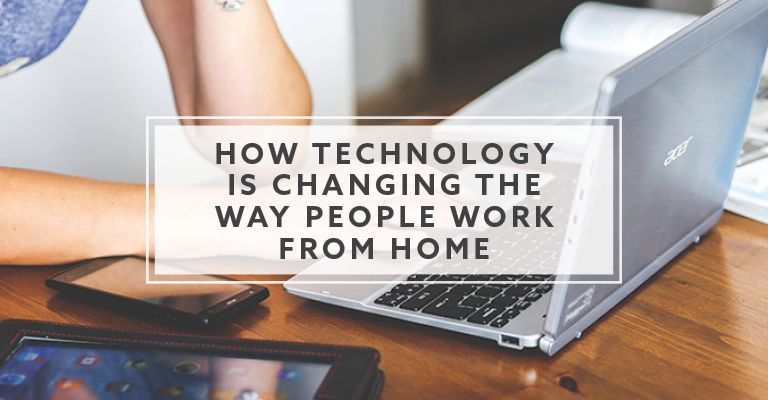Technology has transformed how we work and shaped the structure of businesses. The traditional office setting is evolving into a more flexible work environment, driven by technology and a competitive job market. With the rise of high-speed internet and affordable personal computers, working from home is no longer limited to upper management.
Today, approximately 37% of workers work remote, a significant shift from the past. This change is fueled by a desire for flexibility and autonomy, with modern employees prioritizing these factors over salary in some cases.
Full Disclaimer: We are an office furniture dealer and sell some of the products we review. To learn more about the products we sell, our review process and why you can trust us, please visit: Why we’re different. Who is BTOD.com and The Breakroom Blog?
Technology and Working from Home Links
1. How Do Businesses Hold Remote Workers Accountable?
The rise in telecommuting it due in part to time tracking applications and software that allow employers to monitor productivity. Work Examiner, Veriato and InterGuard are all popular options that have been adopted by thousands of companies across a variety of industries. While these tools might give businesses a sense of security and reassurance that remote workers are staying on task, they can also eat away at employee morale.
Employers need to work to find a balance between protecting their interests and creating an environment of where employees feel trusted and valued. For employees, there is a fine line between monitoring and spying that businesses need to be aware of before implementing monitoring software.
Perhaps the biggest advantage of technology in the modern workplace is the ability to collaborate in real-time with colleagues and contributors from all over the world. Depending on time differences, this type of collaboration might not always occur during normal business hours. Being able to enjoy enterprise level communication and collaboration tools in your home, creates more opportunities to connect with collaborators who may be spread across several time zones.

2. Why Would Businesses Want a Remote Workforce?
For businesses, a remote workforce can also mean a significant reduction in overhead costs. You no longer have to pay for office space, furniture and other amenities in order to run a world-class company. In fact, a computer and an internet connection are enough to both work remotely start your own business. With more accessibility to quality software and powerful and affordable computing and storage, the barriers to entrepreneurship continue to be eliminated.
The ability to accommodate remote employees has become such an important asset, that progressive companies are investing more than ever in transitioning to cloud-based solutions. These networks allow employees to enjoy a single access point from any location with an internet signal. Whether you are working on your tablet in a coffee shop or sitting at a computer in the office, the user experience will be the same.
The ability to telecommute is also good for employee morale. It is a common assumption that allowing employees to work from home will result in decreased productivity. Despite this, some companies use remote employees thinking that any reduction in production will be compensated by lower overhead costs, so that ultimately, there isn’t a net loss.
3. Are At-Home Workers More Productive?
That is why it might be surprising to some that those who work from home are actually more productive, less likely to quit and report better job satisfaction. One case study found that employees who worked from home for a period of 9 months were 13.5% more productive than their office counterparts. Another survey showed that 91% of remote workers believed that they were more productive when they worked from home.
The truth is that the office is far more distracting than both employees and employers realize. The mere fact of having to sit in a cubicle is one of the top ten productivity killers. Add annoying and disruptive co-workers, pointless meetings and snack breaks to the mix and you have an environment full of distractions.
Another interesting affect that technology has had on at-home workers is that they communicate less often with managers, but they do it more concisely. Instead of constantly checking in or even swinging by their office to talk in person, remote workers tend to consolidate their correspondence so that there isn’t a constant back and forth. Cloud-based programs and collaboration tools also help to encourage this streamlined approach to communicating.
4. Where is the Line Between Work and Home Life?
 While technology has made it easier to work from home, it has also blurred the line between our personal and professional lives. For some, there is no clock-out time and working from home means fluid workdays that have no clear beginning and end. Technology may allow us to work more efficiently, but it can also translate into longer hours.
While technology has made it easier to work from home, it has also blurred the line between our personal and professional lives. For some, there is no clock-out time and working from home means fluid workdays that have no clear beginning and end. Technology may allow us to work more efficiently, but it can also translate into longer hours.
Remote workers don’t have to worry about commute times, but they often end up working during the time they would spend driving. They are also more likely to work through lunch and skip breaks. In addition, remote employees tend to work even if they are sick. Instead of or calling in or taking the day off to care for a sick child, they continue to be productive.
This might be good news for employers, but it also says something about the modern worker. Working remotely may come with a long list of benefits for both employers and workers, there are some definite disadvantages. Employees bound to find it harder not to take their work home with them when leaving work means walking from the spare room/office to the living room.





